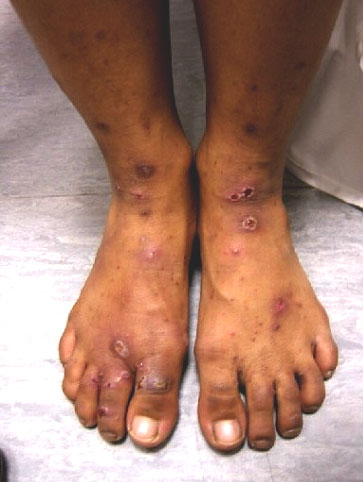
Asia Pacific Journal of Family Medicine Volume 5 Issue 1
FOCUS ON PRACTICE/PRACTICAL SERIES
Clinical quiz: intractable itchy skin lesions
Keng Yin LOH
Department of Family Medicine, International Medical University Malaysia, Jalan Rasah, Seremban, Malaysia
Clinical quiz: intractable itchy skin lesions
Keng Yin LOH
Department of Family Medicine, International Medical University Malaysia, Jalan Rasah, Seremban, Malaysia
A 10-year-old schoolgirl presented with multiple skin lesions on both her lower limbs of 2 weeks duration. She complained of intractable intense itch, which was worse at night. On further questioning, she has a younger brother who also had similar lesions.
Question 1: Describe the skin lesions.
Question 2: What is the diagnosis?
Question 3: What is the etiological agent for this skin lesion?
Question 4: What is the management strategy?
Answers:
1 Multiple skin lesions of various sizes are seen at the dorsal aspect of both feet. The lesions are erythematous, indurated and some of them are crusted. Several lesions are infected with a pustule formation. A few new tiny vesicles are present. The involvement of interdigital areas are typical of this skin problem.
2 The history and physical findings are suggestive of scabies with impetigo.
3 The lesions are caused by the scabies mite, Sarcoptes scabei that is spread by direct contact. The mite burrows through the skin (stratum corneum) and lays eggs. About 2–4 weeks after initial infestation, hypersensitivity reaction takes place and leads to intense itch. Frequently the intense itch will lead to scratching and is complicated by secondary bacterial infection (impetigo).1
4 Oral antibiotics are necessary for the treatment of impetigo. The scabies can be treated by benzyl benzoate emulsion, permethrin or crotamiton cream. All close contacts must be treated. Clothing and bedding is laundered and advice on personal hygiene is very important to prevent recurrent infestation.2
(The above patient was treated with oral cloxacillin 500 mg four times a day for 1 week and benzyl benzoate emulsion topical application for three consecutive nights. The skin lesions healed after 1 week of treatment. Her brother was also brought to the clinic for treatment.)
References
1 Gawkrodger DJ. Dermatology: an Illustrated Colour Text. Edinburgh: Churchill Livingstone 2002, 58–9.
2 Wilkinson JD, Shaw S, Fenton DA. Infestation (1) Scabies. In: Dermatology. Philadelphia: Elsevier 1987, 95–6.
Figure 1

^top